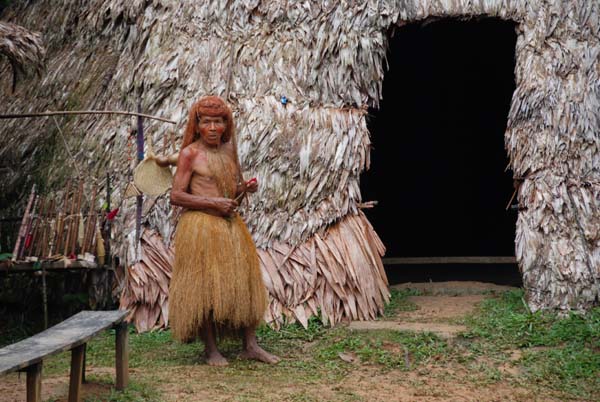
Along the Inca Road
March 20, 2011 (Loreto District, Peru)
We started off the day by visiting a clinic run by an American doctor in the village of Yanamono. Villages on the river are not always within sight of the actual river. You have to know what stream to turn into when traveling along the Amazon. Both banks look the same whether you are going downstream or headed upstream!
This clinic is opposite Yanamono Island on the Peruvian Amazon River. The clinic treats hundreds of people each year and is supported by donations and some help from the Peruvian government.
After a brief visit with the doctor we continued up the same channel to spend time with one of the few Yagua indian villages still left in the rain forest. It is believed that the Spanish explorer, Francisco de Orellana saw the Yagua indians on the banks of the river as he and his men tried to find their way back to Spain in 1542. The Yagua's appearnce with grass skirts and grass headdresses make them look like women from a distance.
As the Spanish approached the indians for help the indians replied with arrows and darts from blowguns to repel the strangers. Orellana thought these were women, the Amazons of ancient mythology and he named the river El Rio Amazonas. The river and the river basin have since taken on the name the Amazon. de Orellana eventually made it to the Atlantic Ocean and found his way to Spain to report what he had seen and experienced.

Yagua elder by a common house. From a distance one can see how Orellana would have thought women were on the bank.
Unfortunately for all indigenous peoples at that time the end of their way of life began a gradual destruction and extinction for some as the Spanish conquistadors conquored the various empires in the new world. For the many tribes living in the rainfores the discovery of rubber was the "gold" which spelled their end. The Yagua were one of a few tribes which has managed to still retrain their culture and which never were captured and forced to work for the rubber barons.
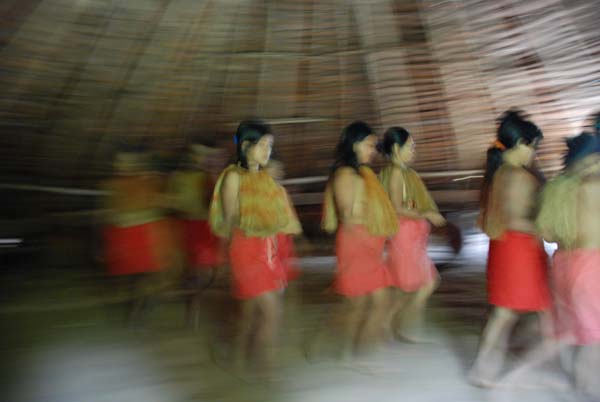
They performed their traditional dances for us and....
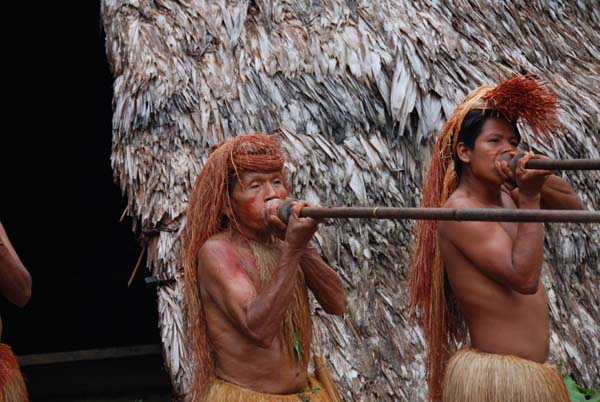
gave us lessons in how to shoot a blowgun.
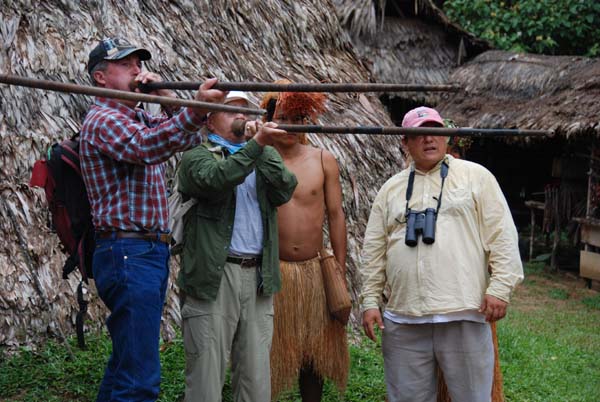
I gave it a try and....
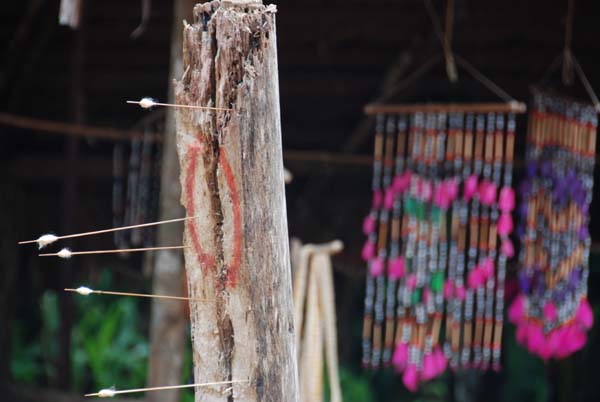
was two for two with one dart hitting the center of the pole. The target was about 30 feet away.
Some things never change!

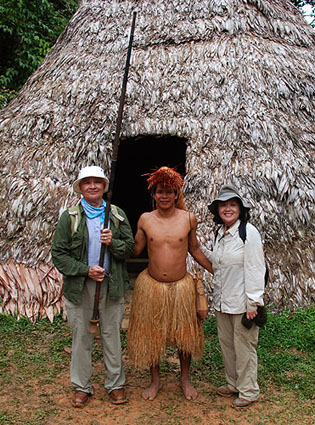
In 1992 my aunt, Marilyn Galván traveled to the same village. 19 years later it looks like jungle fashion remains in vogue.
Afterward we headed back up stream to a local sugar cane distillery. The distillery was founded in the late 1800s when a Brazilian looking for work in Peru was saved from drowning by a young women at this spot. He married the girl and started a sugar cane mill making molasses and high quality rum.
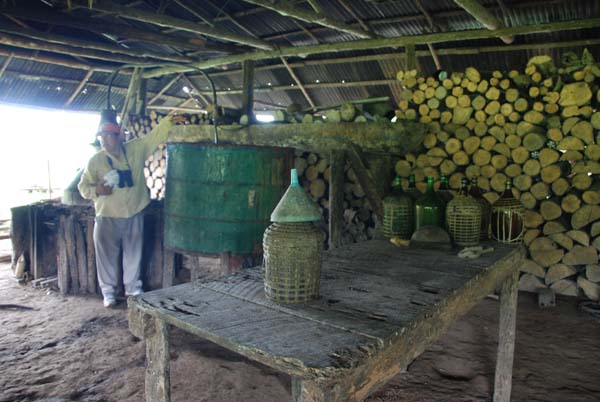
The still.

The still.
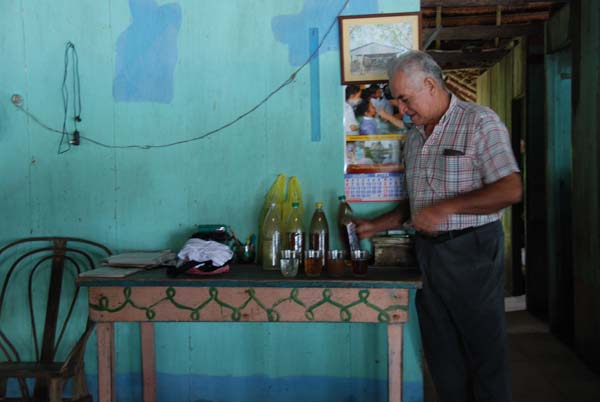
The current owner of the mill. He has two sons who do not want to continue the family tradition so he's looking for someone to take over the business.
Any interest out there?
By late afternoon we were headed back upstream, along with a host of families and aquatic 18-wheelers.
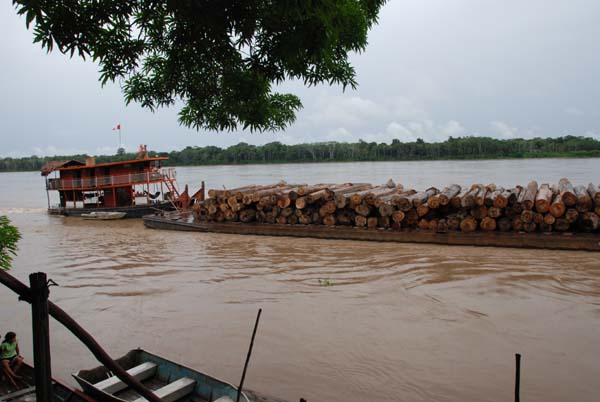
Barge with lumber heading for the mill in Iquitos.
We finished the day looking for the Pink and Grey Dolphin and were lucky despite. These fresh water dolphins are the basis for many myths among the peoples of the Amazon. While we were able to get just a few glimpes of them breaching we were lucky to see them at all.
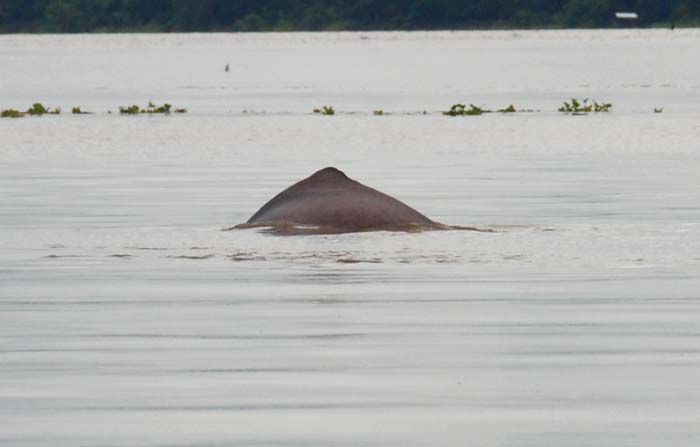
Pink Dolphin
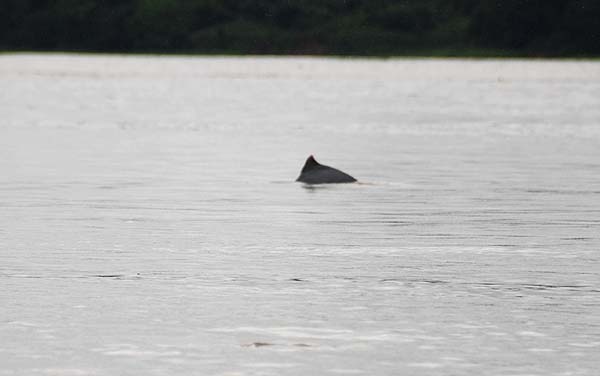
Gray Dolphin. Notice that the dorsal fin of either mammal is different.
We had a great day with little rain. Our hopes were that the evening rains would stop before sunrise for the next day's event, a walk in the rainforest canopy.
Back to the home page
More Galván Trips & Travel Posts
Copyright 2011 Anthony Galván III